In spite of all the promotion, as a category, target date funds merely modulate the ratio of cash, stocks and bonds based on the target retirement date (and presumably average retirement ages). They do make shifts toward lower volatility with higher bond allocations at older ages, but they do not accomplish very much in terms of a shift toward more cash income versus capital appreciation at older ages.
They don’t do much with the ratio of economically sensitive versus defensive stocks. They don’t to much with allocation between major regions of the world (although they do tail off emerging market exposure somewhat). They don’t do much with sector allocation. They use essentially the same bond duration, although they do increase their government bond exposure and reduce low credit quality in later years.
They primarily manage the allocation between cash, stocks and bonds, but they charge on average about 50 basis points or a bit more. In some cases, that expense may possibly be on top of the cost of underlying funds
There are many hundreds of target date funds, so there is clearly dispersion of approaches, but if you have to research to select among them, then you are doing the work that the target date concept was supposed to help you avoid. If you are seeking a simple approach, why not decide what is best for you and allocate between a handful of pure index funds at much lower expense. You could probably save around 40 basis points. Over a long period, that can add up to big bucks.
Let’s look at the actual averages for target date fund categories, as reported by Morningstar Principia (as of December 31, 2012). Then we’ll look at a simple low cost fund combination that should accomplish the same thing.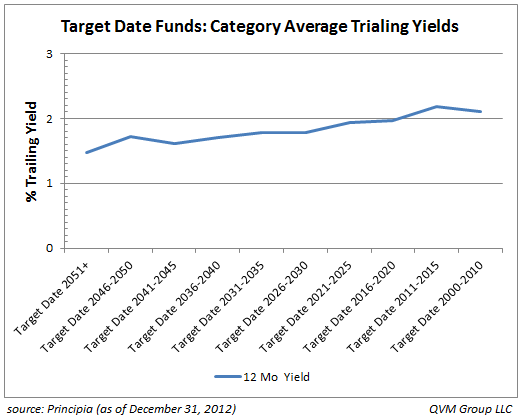
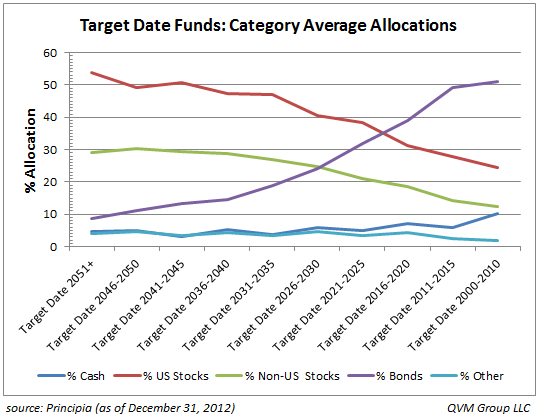


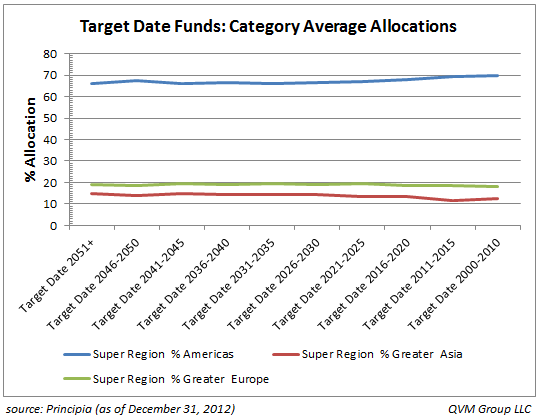

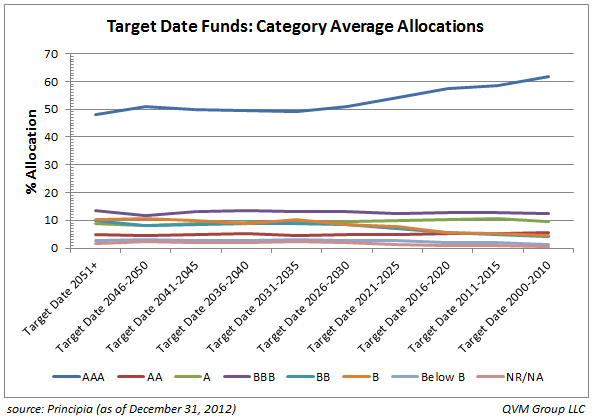
There are four index ETFs from Vanguard that can, for practical purposes simulate the aggregate allocation of the average target date fund with minimum effort and a definite reduction in expenses.
- Cash: VMMXX (exp. 16 bpt — except currently waived – yield 0.01%)
- Total US Stocks: VTI (exp. 6 bpt – yield 2.02%)
- Total Non-US Stocks: VEU (exp. 18 bpt – yield 2.87%)
- Aggregate US Bonds: BND (exp. 10 bpt – yield 2.74%)
It would be quite easy to observe the allocation of the target date funds, and then to emulate their allocation with these four funds.
Within the context of the allocations by target date funds, a somewhat more complex set of funds would represent the non-US stocks with two funds, VEA (exp. 12 bpt – yield 2.86%) for the developed markets, and VWO (exp. 20 bpt – yield 2.19%) for the emerging markets.
Alternatively, for similar expense savings, are the Vanguard Retirement Target Date funds, which also primarily modulate the cash, stock, bond ratio. Here is how those target date funds change yield and allocation by retirement date: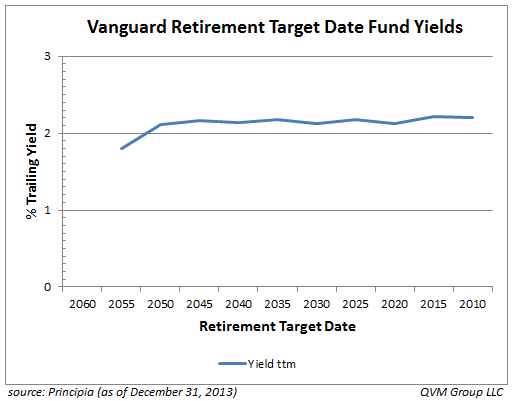

We believe it is possible to do better with at least some additional funds, to tweak the allocation a bit and increase the cash yield, but these funds could make a nice set of core holdings, and save you lots of money over time.
Not even counting the savings up to the time of retirement, a 35 to 40 basis point savings on a $1 million portfolio over 30 years of retirement could save you $105,000 to $120,000, or more if the portfolio grows. Put differently, it could add $3,500 to $4,000 per year to your retirement income per million of assets. That is not chicken feed.
